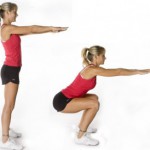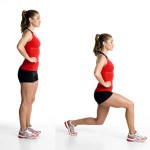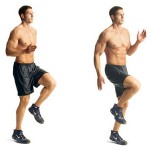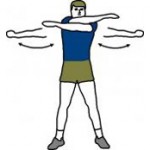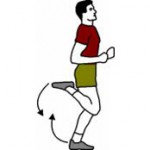We all know that exercise is a great way to improve health and increase physical fitness. A very important component of a workout session is the warm-up. Do you perform a warm-up before exercising? If not, here are a few reasons to begin warming up before every workout.
Performing a warm-up before exercising provides many benefits, including:
-increased blood flow to working muscles
-prevention of injury due to increased elasticity of muscles
-joint lubrication and increased range of motion (ROM) of joints
-increased flexibility of tendons and ligaments, and
-a gradual increase in energy production which limits lactic acid buildup
A warm-up should last around 5-10 minutes. But this number may vary due to factors such as environment (cold weather, for example). One must determine for himself or herself how long his or her warm-up should be.
So, what should a warm-up consist of? A warm-up should include dynamic movement that focuses on major muscle groups. A good warm-up consists of movements that increase heart rate and range of motion in joints. Here are some good warm-up movements to perform to prepare yourself for exercise:
-Body Weight Squat
Begin with feet forward, hip-width apart, standing tall, straight back, and neutral head. Lower into a squat position keeping hips and butt back. Make sure knees stay behind toes. Return to start. Repeat.
-Alternating Lunges
Begin with feet hip-width apart and feet forward. Step forward with the right foot and lower left knee as far as you can without touching the ground. Be sure to keep right knee behind toes. Push weight through front heel. Return to start and repeat with left leg.
-Jumping Jacks
Begin with feet forward and hip-width apart. Bring arms above head as you jump feet out more than shoulder-width apart. Return to start. Repeat.
-High Knees
This move is simply a jog in place, only you will bring your knees no higher than the hip. Activate arms as shown.
-Arm Swings
Begin with arms straight out from shoulders. Swing arms in as if to hug yourself. Keep elbows soft. Swing arms back out and repeat.
Remember: A warm-up is important when it comes to safety during exercise. You can be creative with your movements, just keep in mind that the warm-up will not be as intense as your actual workout. Try it, and see what a warm-up can do for your workout!
Pictures from: running.competitor.com
missfitnesslife.com
womenshealthmag.com
empowernetwork.com
activephysioclinic.com
By Hannah Miller ~Blogistics~
